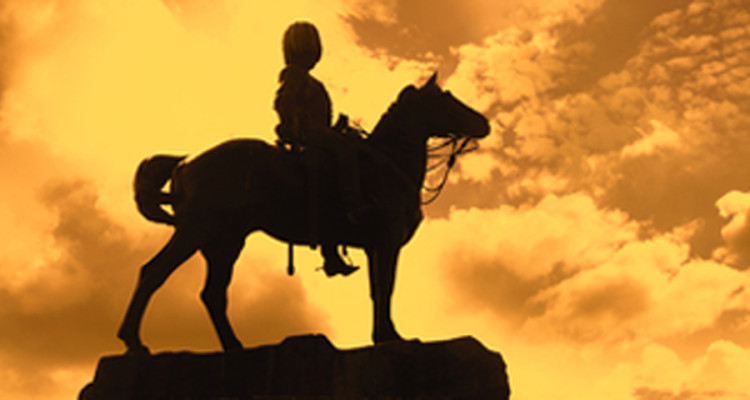Like so many battlegrounds, South Africa became a hotbed for conflict toward the end of the 19th Century after it was discovered that the country hosted a treasure trove of valuable commodities, particularly diamonds and gold.
At the time of the mineral discoveries much of South Africa was controlled by the Brits, however the Afrikaners (mainly Dutch descendants) thought they should have rights to a swath of the newfound minerals. Territorially, given the land concessions the Brits had made prior to the discoveries, the Afrikaners had a strong argument to claim much of the minerals. However, as we’ve seen many times before, when a world power, as the Brits were at the time, wants something from one of its colonies there’s not much that can be done to stop it other than going to war. Throw in the added resentment of the Afrikaners toward the Brits for taking religion out of school curriculum, mix in an antagonist, influential, power-hungry land mogul named Cecil Rhodes from Britain, and you have the perfect stew for conflict. This was the springboard for the Boer Wars.
While listening to another great Tim Ferris podcast, this time with General Stan McChrystal, I decided to read Diamonds, Gold and War after the general described it as a fascinating read on the Boer Wars. I’ve always been intrigued with the highly fractured continent of Africa; and given my background having worked with dozens of public mining companies on the PR side, it seemed like a perfect book. It lived up to McChrystal’s praise.
Diamonds, Gold, and War was written by Martin Meredith. It is an extremely detailed account of the rise of Cecil Rhodes and how South Africa became the epicenter for the Boer Wars. Meredith is a historian on Africa and a journalist. His knowledge, particularly in relation to South Africa and Zimbabwe, is incredible. He has also written biographies on Nelson Mandela and the one-time Zimbabwean leader Robert Mugabe.
5 Things I Learned from Reading ‘Diamonds, Gold, and War’
1. Cecil Rhodes was deceptive: Cecil Rhodes really pushed for the Boer Wars. He had little respect for the Afrikaners, and was a staunch British imperialist with an obsession for power and wealth. In fact, it’s safe to say he wanted war.
More than a decade before the first Boer War, Rhodes moved to South Africa in search of riches. He struggled early on, floundering from one venture to the next, almost losing everything before striking it big after it was discovered that South Africa hosted rich diamond and gold deposits.
Rhodes made his fortunes staking mining claims throughout South Africa. After secretly staking many mineral rich claims, and once Rhodes knew he had a virtual monopoly on the prospective land, he would promote the story to investors – then proceed to sell shares in his claims.
Cecil Rhodes appears to have been a morally bankrupt stock promoter – yet he ended up becoming one of the richest men in the world at the time. And some of his mining claims indeed did end up becoming vast producers of gold and diamonds. Rhodes was responsible for founding De Beers, which at one point controlled much of the world’s diamond trade.
Interesting tidbit from the book Diamonds, Gold and War: Cecil Rhodes apparently had little interest in women. Many tried to seduce him, but to no avail. Martin Meredith eludes to the fact that he preferred to hang with the fellas and talk business rather than gallivant with women. The book doesn’t say it, but it certainly eludes to the fact that Rhodes may have been gay.
2. The Brits used the despicable, which was, regrettably, not uncommon in that era, treatment of black people by some Afrikaners as a way to gain public support in South Africa and seize land. It became the Brits’ public reason to confront the Afrikaners and provoke hostilities. In reality, however, the Brits’ motives had everything to do with the minerals under the ground in the region controlled by the Afrikaners. The Brits’ treatment of black people certainly was not ideal either.
3. When starting this provocation with the Afrikaners, the Brits’ biggest fear was awakening the beast, so to speak, in Germany. Germany was a global power at the time, and the Brits feared that if they pushed the Afrikaners too hard, the Germans may come to their defense purely for the economic opportunity it could bring.
4. The specific outcrop that sparked the land rush was known as the Witwatersrand. It became the world’s largest gold discovery. This created a gold rush comparable in scope to the Klondike and California. It attracted prospectors and miners from around the world.
5. During the peak of the gold and diamond rush in South Africa, stock trading in mining companies was nuts. There was so much demand for these types of shares that after the market closed, participants and investors proceeded outside to continue trading into the evening. Given the degree of hype around this sector at the time, it paved the way for fraudsters and nefarious characters to run land scams. When the commodity bubble popped, hundreds of miners and investors were left bankrupt, and they quickly fled South Africa never to return again.
There are a lot of parallels in Diamonds, Gold and War to modern times, both geopolitically and economically. Anyone who ignores history does so at their own peril. I highly recommend Martin Meredith’s book to any history buff, investor or finance professional. It was a very educational and entertaining read. Click here to order your copy.
Aaron












